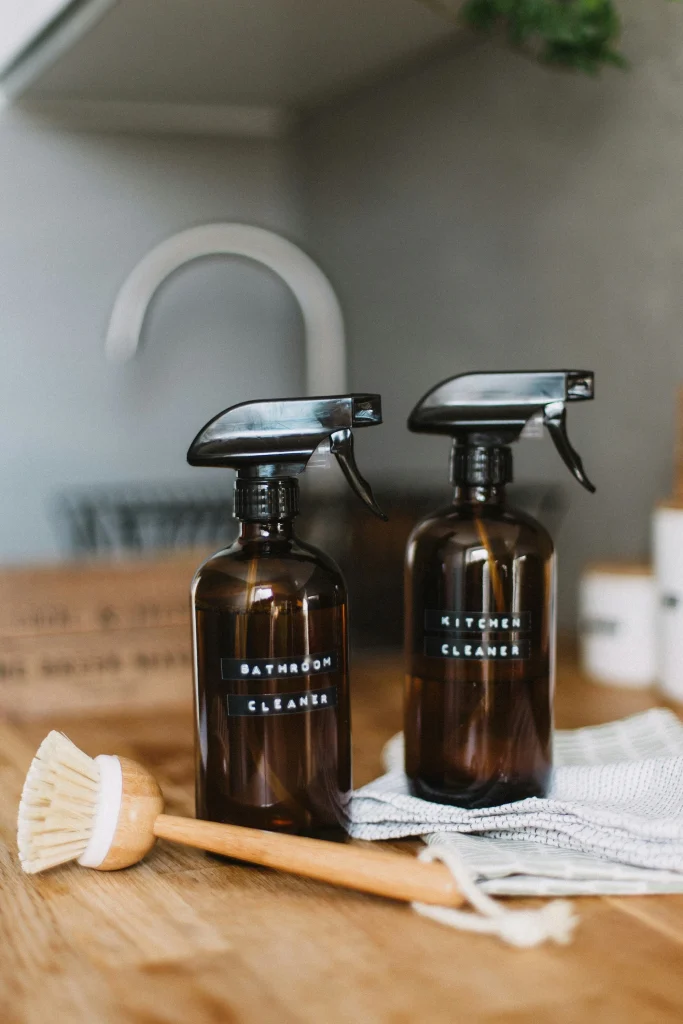Every spring, we dust off our cleaning supplies and tackle the obvious tasks: washing windows, clearing cobwebs, and giving the house a thorough vacuum. But what about those organising jobs that have been lurking in the back of your mind for months? You know the ones – they’re not dirty exactly, but they’ve been slowly driving you mad with their chaos and inefficiency.
This spring, let’s go beyond the surface cleaning and tackle the organising tasks you’ve been putting off. These are the projects that will genuinely transform how your home functions, not just how it looks.
The psychology of avoidance
First, let’s acknowledge why these tasks have been avoided. It’s rarely about laziness – usually, it’s because these jobs feel overwhelming, emotionally challenging, or simply unclear where to start. And sometimes it’s because we have ADHD. The medicine cabinet needs sorting, but what if you find expired prescriptions from years ago? The photo boxes are a mess, but dealing with them means confronting memories you’re not ready to process.
Understanding that avoidance is normal, helps us approach these tasks with compassion rather than criticism. You haven’t been procrastinating – you’ve been protecting your mental energy for other priorities. And that’s okay.
The deep organising hit list
The digital photo disaster
Your phone has 8,000 photos, your computer has folders within folders of images, and somewhere there are still physical photos in boxes. This digital chaos isn’t just annoying – it’s robbing you of the joy these memories should bring.
Start small: Choose one month from last year and sort those photos into folders by event. Create a simple system: Year > Month > Event. Don’t try to organise everything at once – set a timer for 30 minutes and focus on just that one month.
The payoff: When you can actually find photos to share or print, when your phone storage isn’t constantly full, and when you can create photo books without spending hours hunting for specific images.
The medicine cabinet time bomb
That collection of half-used prescriptions, expired vitamins, and mystery tubes isn’t just clutter – it’s potentially dangerous. Yet we avoid this task because it feels tedious and slightly gross.
The reality check: Expired medications can be ineffective or harmful. That tube of prescription cream from 2019? It’s not helping anyone taking up space.
The system: Empty everything out, check expiry dates ruthlessly, and group remaining items by category. Create a simple inventory list so you know what you have before buying more. Invest in a small basket or drawer organiser to maintain the system.
And remember! Don’t throw out your old meds! Check with your pharmacy if they’ll take them back and dispose of them safely.
The paperwork avalanche
Bills paid but not filed, warranties for appliances you no longer own, and instruction manuals for everything you’ve ever purchased. This paper mountain grows because each piece seems too important to throw away, but too boring to deal with properly.
Break it down: Create four piles – Action Required, To File, To Scan, and Recycle. Start with just one drawer or box. You don’t need to solve your entire filing system in one day.
The game changer: Set up a simple digital filing system alongside your physical one. Scan warranties and manuals so you can access them from anywhere, then recycle the paper copies.
The craft supply explosion
Whether it’s sewing supplies, art materials, or DIY tools, creative supplies have a way of taking over entire rooms. We avoid organising them because creativity feels like it should be spontaneous, not systematised (again, hi ADHD people!).
The truth: Organised supplies actually enhance creativity because you can find what you need when inspiration strikes. There’s nothing creative about spending 20 minutes hunting for scissors.
The approach: Group similar items together, use clear containers so you can see everything, and create a simple inventory. If you haven’t used something in two years, be honest about whether you’ll use it in the next two.
The clothing catastrophe
Beyond the obvious wardrobe clear-out lies the real challenge: clothes that don’t fit but might one day, special occasion outfits worn once, and items with sentimental value that you never actually wear.
The deeper question: What image of yourself are you holding onto with these clothes? Sometimes we keep items because they represent who we think we should be rather than who we are.
The process: Try things on. Not in your mind – actually put them on your body. If something doesn’t fit well or make you feel confident right now, it’s not serving you.
You can either donate, swap or store away clothes you don’t use at the moment.
The gift wrap graveyard
That collection of wrapping paper from Christmas 2018, ribbons that are permanently tangled, and gift bags that are “too nice to throw away” but too worn to use again.
The reality: Wrapping supplies should make gift-giving easier, not create stress when you’re trying to wrap something quickly.
The solution: Keep only what you’ll realistically use in the next year. Invest in a simple storage system – even a large plastic container with dividers works better than the current free-for-all.
Make it a priority to use what you already have at home before running to the shops. You’ll be happy to have the clutter gone and you’ll be happy to keep that extra money for something else.
Making the unbearable bearable
Set tiny goals
Set tiny goals
Don’t aim to organise your entire loft in one weekend. Choose one box, one drawer, or one category at a time. Success breeds motivation.
Use the timer trick
Set a timer for 15-20 minutes and work until it goes off. This makes overwhelming tasks feel manageable and often you’ll find you want to continue once you’ve started.
Create accountability
Tell someone what you plan to tackle and when. Better yet, ask them to check in with you about your progress. Gentle external accountability works wonders.
Reward progress
Plan something enjoyable after completing each avoided task. It doesn’t have to be big – a favourite coffee, a relaxing bath, or time with a good book.
The seasonal strategy
Spring is perfect for these deeper organising tasks because the lighter evenings give us more energy, and there’s something psychologically powerful about fresh starts. But don’t feel you have to do everything at once.
Choose 2-3 tasks from your personal avoidance list and tackle them over the next month. The goal isn’t perfection – it’s progress and the relief that comes from finally addressing things that have been niggling at you.
It’s all about creating systems
The real victory isn’t just completing these avoided tasks – it’s creating simple systems so they don’t become overwhelming again. A five-minute weekly check of the medicine cabinet prevents future chaos. A monthly digital photo sort keeps the backlog manageable.
The most organised homes aren’t maintained by people who are naturally tidy – they’re maintained by people who have systems that work with their actual lifestyle, not against it.
Remember this
Here’s what happens when you tackle the organising tasks you’ve been avoiding: your mental load lightens. You stop wasting energy thinking about what you should be doing and start enjoying what you have done. Your home begins to truly support your life, rather than creating background stress.
This spring, go beyond the surface clean. Tackle one or two of those lingering organising challenges. Your future self will thank you for finally dealing with what you’ve been putting off, and you’ll wonder why you waited so long to reclaim that mental and physical space.
The dust will settle again next week, but the peace of mind from finally organising that troublesome area? That lasts.

